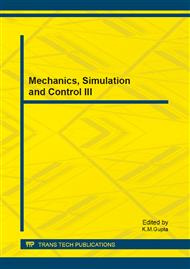p.499
p.503
p.508
p.513
p.518
p.523
p.528
p.536
p.541
Application of Extended Kalman Filter Algorithm in SDINS/GPS Integrated Inertial Navigation System
Abstract:
This paper deals with the integrated navigation system based on fusion of data from Strap Down Inertial Navigation System (SDINS) and from Global Position System (GPS). In order to increase the accuracy and reliability of navigation algorithms, these two different systems are combined. The navigation system that be analyzed is basically of INS type while GPS corrective data are obtained less frequently and these are treated as noisy measurements in an extended Kalman filter scheme. The simulation of whole system (SDINS/GPS integrated system with Kalman filter) was modeled using MATLAB package, SIMULINK© tool. The proper choice of Kalman filter parameters had taken to minimize navigation errors for a typical medium range flight scenario (Simulated test trajectory and real trajectory of vehicle motion). A prototype of a SDINS installed on a moving platform in the laboratory to collected data by many experiments to verification our SIMULINK models.
Info:
Periodical:
Pages:
528-535
Citation:
Online since:
August 2013
Authors:
Keywords:
Price:
Сopyright:
© 2013 Trans Tech Publications Ltd. All Rights Reserved
Share:
Citation:


